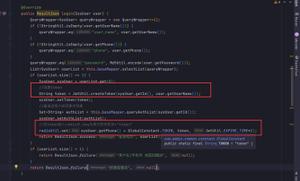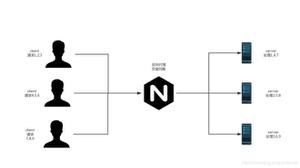Spring AOP中JoinPoint的用法
本文内容纲要:
- Spring JoinPoint的用法- JoinPoint 对象
- 常用API
- ProceedingJoinPoint对象
- Demo
- 切面类
- 被代理类
- 测试类
- 输出结果
- 声明
Spring JoinPoint的用法
JoinPoint 对象
JoinPoint对象封装了SpringAop中切面方法的信息,在切面方法中添加JoinPoint参数,就可以获取到封装了该方法信息的JoinPoint对象.
常用API
| 方法名 | 功能 |
|---|---|
| Signature getSignature(); | 获取封装了署名信息的对象,在该对象中可以获取到目标方法名,所属类的Class等信息 |
| Object[] getArgs(); | 获取传入目标方法的参数对象 |
| Object getTarget(); | 获取被代理的对象 |
| Object getThis(); | 获取代理对象 |
ProceedingJoinPoint对象
ProceedingJoinPoint对象是JoinPoint的子接口,该对象只用在@Around的切面方法中,
添加了以下两个方法。
Object proceed() throws Throwable //执行目标方法 Object proceed(Object[] var1) throws Throwable //传入的新的参数去执行目标方法
Demo
切面类
@Aspect@Component
public class aopAspect { /** * 定义一个切入点表达式,用来确定哪些类需要代理 * execution(* aopdemo.*.*(..))代表aopdemo包下所有类的所有方法都会被代理 */ @Pointcut("execution(* aopdemo.*.*(..))") public void declareJoinPointerExpression() {} /** * 前置方法,在目标方法执行前执行 * @param joinPoint 封装了代理方法信息的对象,若用不到则可以忽略不写 */ @Before("declareJoinPointerExpression()") public void beforeMethod(JoinPoint joinPoint){ System.out.println("目标方法名为:" + joinPoint.getSignature().getName()); System.out.println("目标方法所属类的简单类名:" + joinPoint.getSignature().getDeclaringType().getSimpleName()); System.out.println("目标方法所属类的类名:" + joinPoint.getSignature().getDeclaringTypeName()); System.out.println("目标方法声明类型:" + Modifier.toString(joinPoint.getSignature().getModifiers())); //获取传入目标方法的参数 Object[] args = joinPoint.getArgs(); for (int i = 0; i < args.length; i++) { System.out.println("第" + (i+1) + "个参数为:" + args[i]); } System.out.println("被代理的对象:" + joinPoint.getTarget()); System.out.println("代理对象自己:" + joinPoint.getThis()); } /** * 环绕方法,可自定义目标方法执行的时机 * @param pjd JoinPoint的子接口,添加了 * Object proceed() throws Throwable 执行目标方法 * Object proceed(Object[] var1) throws Throwable 传入的新的参数去执行目标方法 * 两个方法 * @return 此方法需要返回值,返回值视为目标方法的返回值 */ @Around("declareJoinPointerExpression()") public Object aroundMethod(ProceedingJoinPoint pjd){ Object result = null; try { //前置通知 System.out.println("目标方法执行前..."); //执行目标方法 //result = pjd.proeed(); //用新的参数值执行目标方法 result = pjd.proceed(new Object[]{"newSpring","newAop"}); //返回通知 System.out.println("目标方法返回结果后..."); } catch (Throwable e) { //异常通知 System.out.println("执行目标方法异常后..."); throw new RuntimeException(e); } //后置通知 System.out.println("目标方法执行后..."); return result; } }
被代理类
/** * 被代理对象
*/
@Component
public class TargetClass { /** * 拼接两个字符串 */ public String joint(String str1, String str2) { return str1 + "+" + str2; } }
测试类
public class TestAop { @Test public void testAOP() { //1、创建Spring的IOC的容器 ApplicationContext ctx = new ClassPathXmlApplicationContext("classpath:bean.xml"); //2、从IOC容器中获取bean的实例 TargetClass targetClass = (TargetClass) ctx.getBean("targetClass"); //3、使用bean String result = targetClass.joint("spring","aop"); System.out.println("result:" + result); } }
输出结果
目标方法执行前...目标方法名为:joint
目标方法所属类的简单类名:TargetClass
目标方法所属类的类名:aopdemo.TargetClass
目标方法声明类型:public
第1个参数为:newSpring 第2个参数为:newAop 被代理的对象:aopdemo.TargetClass@4efc180e 代理对象自己:aopdemo.TargetClass@4efc180e (和上面一样是因为toString方法也被代理了) 目标方法返回结果后... 目标方法执行后... result:newSpring+newAop
声明
本文章属于笔者的学习笔记,若内容有误,还请赐教!谢谢
参考文章:
http://blog.csdn.net/ochangwen/article/details/52557724
http://blog.csdn.net/a9529lty/article/details/7031070
作者:zFxiang_
链接:https://www.jianshu.com/p/90881bfc3241
来源:简书
简书著作权归作者所有,任何形式的转载都请联系作者获得授权并注明出处。
本文内容总结:Spring JoinPoint的用法,JoinPoint 对象,常用API,ProceedingJoinPoint对象,Demo,切面类,被代理类,测试类,输出结果,声明,
原文链接:https://www.cnblogs.com/feng9exe/p/10949718.html
以上是 Spring AOP中JoinPoint的用法 的全部内容, 来源链接: utcz.com/z/362837.html








